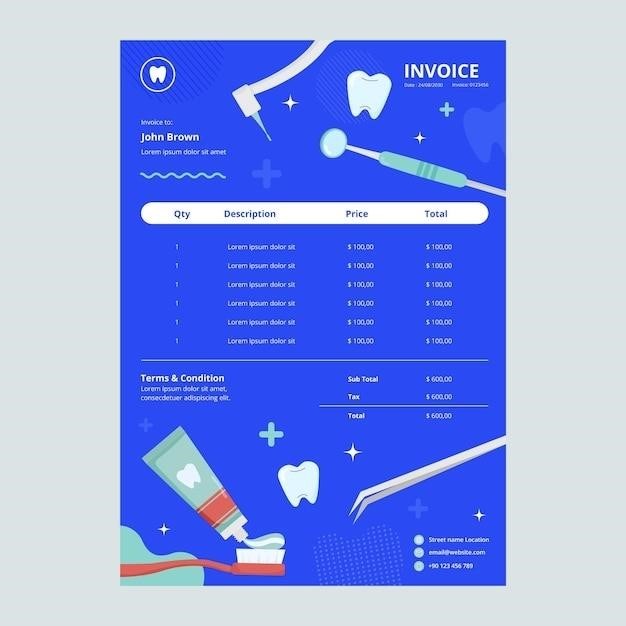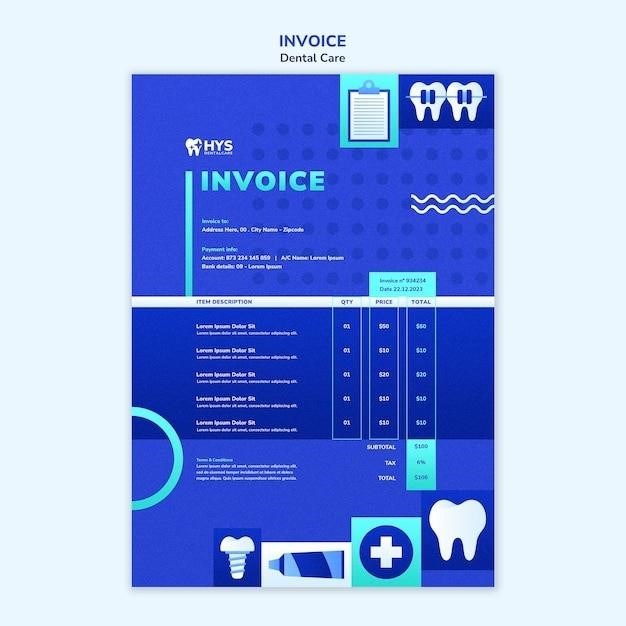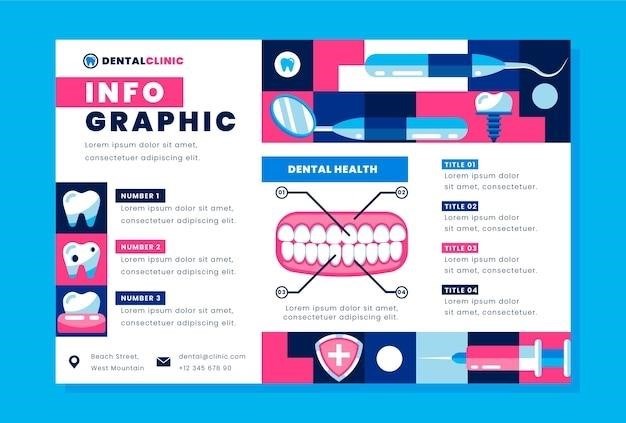
new periodontal classification pdf
The 2017 World Workshop Classification of Periodontal Diseases
The 2017 World Workshop Classification, a collaborative effort by the AAP and EFP, updated the 1999 classification to reflect advancements in periodontal research and clinical understanding, resulting in a new staging and grading system for periodontitis.
Introduction to the New Classification System
The 2017 World Workshop Classification of Periodontal and Peri-Implant Diseases and Conditions, a joint undertaking by the American Academy of Periodontology (AAP) and the European Federation of Periodontology (EFP), marked a significant advancement in the field. Published as a supplement to the June 2018 Journal of Periodontology, this new classification aimed to incorporate the substantial progress made in biological and clinical research since the 1999 International Classification of Periodontal Diseases. The need for a revised system stemmed from limitations in the previous classification’s ability to accurately capture the complexity of periodontal diseases and their diverse clinical presentations. This updated system offered a more comprehensive and nuanced approach, facilitating improved diagnosis, treatment planning, and communication among dental professionals. The new classification moved away from the previous chronic/aggressive dichotomy, offering a more sophisticated framework for understanding the disease process.
Key Changes from the 1999 Classification
The 2017 classification significantly departs from its 1999 predecessor. Most notably, it abandons the previous dichotomy of chronic and aggressive periodontitis, instead unifying these under a single “periodontitis” category. This reflects a growing understanding that the underlying disease processes are more complex and interconnected than previously thought. The new system introduces a multidimensional staging and grading system, providing a more precise assessment of disease severity. Staging considers factors like attachment loss, bone loss, and the presence of specific clinical characteristics. Grading, on the other hand, focuses on the rate of disease progression and the patient’s risk factors. This multi-faceted approach offers a more granular and informative diagnosis compared to the simpler binary classification of the past. Furthermore, the 2017 classification explicitly incorporates peri-implant diseases, recognizing the growing prevalence of dental implants and the unique challenges they present in terms of periodontal health. The incorporation of peri-implant disease reflects a modern approach to comprehensive oral health. These changes represent a paradigm shift in how clinicians understand and treat periodontal diseases.
Rationale for the Updated Classification
The impetus for revising the 1999 classification stemmed from substantial advancements in our understanding of periodontal diseases since its inception. Accumulated research revealed limitations in the previous binary system of chronic and aggressive periodontitis, which failed to capture the spectrum of disease presentations and progression rates. The 2017 update aimed to create a more nuanced and clinically relevant classification reflecting this expanded knowledge. Specifically, the new system’s multidimensional staging and grading accounts for the complex interplay of various clinical and biological factors influencing disease severity. This allows for a more individualized and targeted approach to treatment planning, ultimately benefiting patients. The inclusion of peri-implant diseases is further justified by the increasing prevalence of dental implants and the emerging body of research demonstrating the need for a comprehensive classification encompassing both natural teeth and implants. This holistic approach ensures that both types of periodontal conditions are addressed within a unified framework, promoting consistency and accuracy in diagnosis and management. The updated classification, therefore, reflects a commitment to incorporating cutting-edge research into clinical practice, leading to better patient outcomes.

Periodontitis Staging and Grading
The 2017 World Workshop introduced a novel multidimensional staging and grading system for periodontitis, moving beyond the previous simpler classification. This system incorporates clinical attachment loss, bone loss, and rate of progression for a more comprehensive assessment.
Multidimensional Staging System
The 2017 World Workshop Classification of Periodontal and Peri-Implant Diseases and Conditions introduced a significant shift from the previous classification system by implementing a multidimensional staging system for periodontitis; This innovative approach goes beyond the limitations of previous classifications by incorporating multiple factors to provide a more comprehensive and nuanced assessment of the disease. Instead of relying solely on clinical attachment loss (CAL) and/or bone loss, the new system considers several key parameters to accurately stage the disease. These parameters include the extent of CAL and bone loss, the presence or absence of specific clinical features such as bleeding on probing (BOP) or suppuration, and the rate of disease progression. The multidimensional staging system provides clinicians with a more detailed understanding of the severity and progression of periodontitis, leading to more precise treatment planning and improved patient outcomes. By taking a holistic approach that considers multiple aspects of the disease, the new system offers a more accurate reflection of the disease’s complexity and allows for tailored treatment strategies.
Grading System for Periodontitis Severity
Complementing the multidimensional staging system, the 2017 classification introduced a grading system to further refine the assessment of periodontitis severity. This grading system focuses on the rate of disease progression and the presence of specific risk factors. Unlike the staging system, which primarily assesses the extent of damage already inflicted, the grading system provides insight into the dynamic nature of the disease. A higher grade indicates a more aggressive and rapidly progressing disease. Factors considered in determining the grade include the rate of bone loss, the presence of systemic risk factors such as diabetes or smoking, and the patient’s response to treatment. This granular approach to assessing disease severity is vital for tailoring treatment strategies. A patient with a high grade might require more intensive and frequent intervention compared to one with a lower grade. The combination of staging and grading allows clinicians to create a comprehensive treatment plan addressing the current state of the disease and its potential for future progression, leading to more effective and personalized periodontal care.
Clinical Implications of the New Classification
The 2017 classification significantly impacts clinical practice by providing a standardized, evidence-based framework for diagnosis, treatment planning, and monitoring periodontal disease progression; This leads to improved patient care and outcomes.
Treatment Planning Based on Staging and Grading
The 2017 World Workshop Classification system revolutionized periodontal treatment planning by introducing a multidimensional staging and grading system. This system moves beyond simple descriptions of disease severity, incorporating crucial factors like extent of attachment loss, bone loss, and the presence of risk factors. The staging process assesses the overall disease severity based on these parameters, classifying the disease into stages I through IV, with stage IV representing the most advanced form. Simultaneously, grading considers the rate of disease progression, categorizing it as either slow or rapid, providing vital information on the aggressiveness of the disease process.
This combined approach allows clinicians to develop individualized treatment plans tailored to the specific characteristics of each patient’s condition. For instance, a patient with stage II periodontitis exhibiting slow disease progression will receive a very different treatment plan compared to a patient with stage IV periodontitis progressing rapidly. The former may necessitate less extensive intervention, focusing on maintenance and prevention of further progression. In contrast, the latter may require more aggressive measures to address the advanced stage and rapid progression. The classification system thus facilitates a more precise and effective approach to treatment, enhancing predictability of outcomes. Moreover, it promotes better communication between clinicians, fostering collaborative care and contributing to improved patient outcomes in periodontal therapy. The combination of staging and grading provides a comprehensive assessment that guides treatment decisions, ensuring appropriate and effective interventions are implemented.
Chairside Guide for Clinicians
The complexity of the 2017 World Workshop Classification necessitates a practical chairside guide for efficient implementation. This guide streamlines the diagnostic process, offering a clear pathway for clinicians to accurately classify periodontal disease based on the new system. It provides simplified algorithms and decision trees, visually representing the staging and grading criteria. These tools assist clinicians in navigating the various parameters efficiently, reducing ambiguity and ensuring consistent application of the classification system across different practices. The guide incorporates easily accessible tables and charts, summarizing key diagnostic features and treatment implications for each stage and grade of periodontitis.
Furthermore, the chairside guide includes practical tips for data collection, emphasizing the importance of accurate measurements and comprehensive clinical assessments. It helps clinicians select appropriate diagnostic tools and techniques, ensuring data reliability and reproducibility. By presenting the information in a user-friendly format, the guide ensures smooth integration into routine clinical practice, minimizing the learning curve and maximizing the benefits of the new classification system. The guide serves as an invaluable resource, assisting clinicians in providing the most effective and targeted periodontal therapy based on a precise and consistent diagnosis. The goal is to enhance the accuracy and efficiency of periodontal diagnosis and ultimately improve patient care.

Impact on Periodontal Practice
The 2017 classification significantly impacts periodontal practice by standardizing diagnosis, improving communication among professionals, and facilitating evidence-based treatment planning for better patient outcomes. Resources and further information are readily available online.
Implementation of the New Classification
Successful implementation of the 2017 World Workshop Classification requires a multifaceted approach. Educational initiatives are crucial, encompassing continuing education courses, online modules, and readily accessible, user-friendly guides for clinicians. These resources should clearly explain the rationale, criteria, and practical application of the new staging and grading system. Professional organizations like the American Academy of Periodontology (AAP) and the European Federation of Periodontology (EFP) play a vital role in disseminating this information through workshops, publications, and their websites. Furthermore, integration into dental school curricula is essential to ensure that future dentists are well-versed in this updated classification system from the outset of their careers. The availability of chairside guides and decision-making algorithms can streamline the diagnostic process for practitioners, aiding in consistent application of the new standards. Finally, ongoing monitoring and evaluation of implementation effectiveness are essential to identify any challenges and adapt strategies for optimal uptake and utilization of the 2017 classification.
Resources and Further Information
For comprehensive details on the 2017 World Workshop Classification of Periodontal and Peri-Implant Diseases and Conditions, refer to the official proceedings published as a supplement to the June 2018 issue of the Journal of Periodontology. This publication provides a detailed explanation of the rationale, criteria, and implementation guidelines for the new classification system. The American Academy of Periodontology (AAP) and the European Federation of Periodontology (EFP) websites serve as valuable resources, offering access to educational materials, guidelines, and updates on the classification. Numerous online articles and continuing education courses delve into the intricacies of the new system, providing clinicians with opportunities for enhanced understanding and skill development. Searching for terms like “2017 World Workshop Classification,” “periodontal staging and grading,” or “AAP/EFP classification” will yield a wealth of relevant information. Additionally, textbooks on periodontology and related journals frequently incorporate and discuss the 2017 classification, offering further in-depth analysis and clinical perspectives.